Fish in Hot Water
Developing a Scientific Method for Fish Conservation
By CalTrout's partners at the UC Davis Center for Watershed Sciences
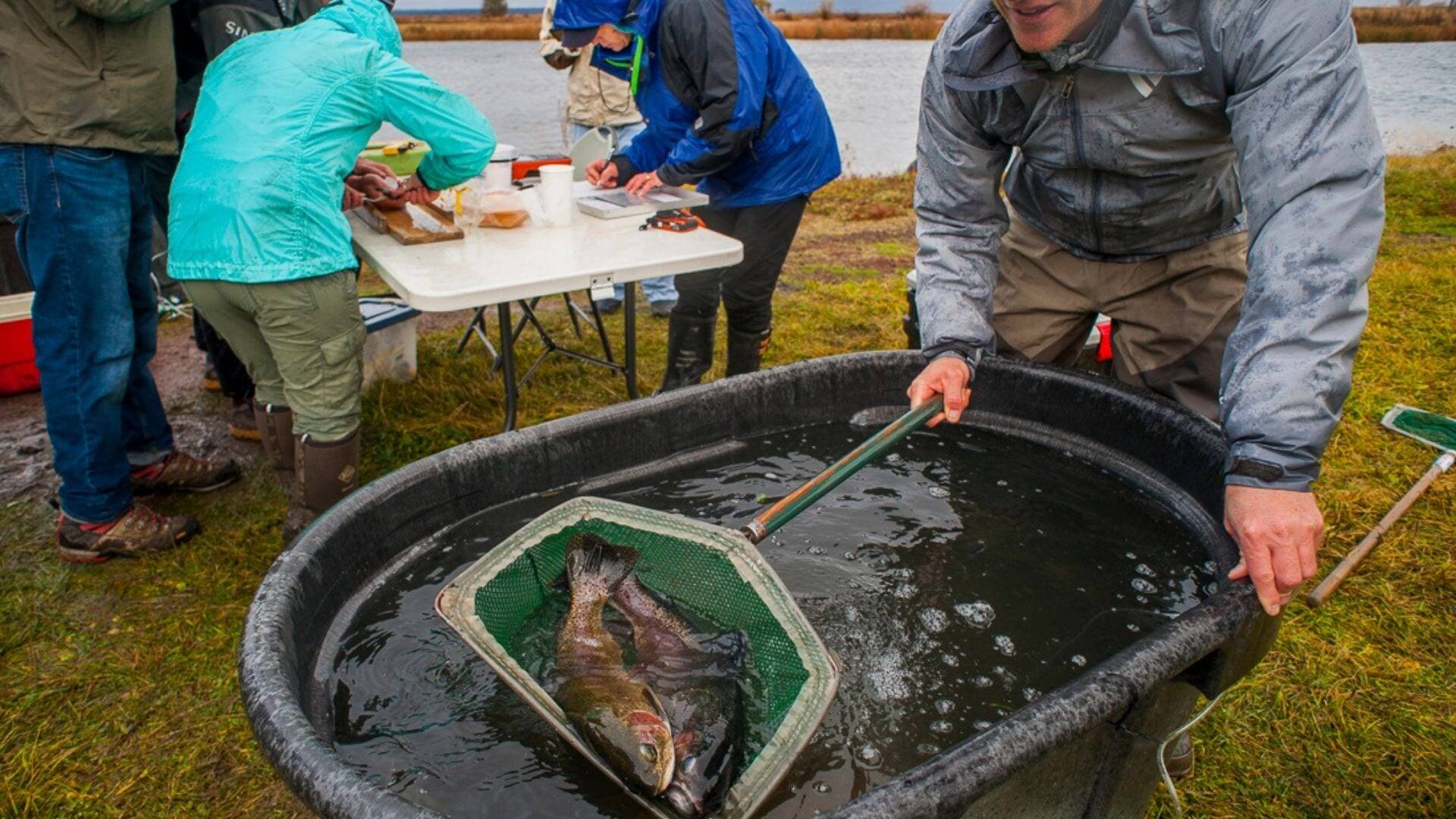
Knowledge is Power
As of 2021, California is home to 31 distinct kinds of native salmon, steelhead and trout species, 20 of which are found only in our state. These fish are prized for their economic and cultural significance by local communities, and for their recreational attributes by anglers from around the world.
But these fish face an alarming threat that can't be ignored. If current trends continue, nearly half of these fish will be extinct within the next 50 years.
How do we know this? And perhaps an even better question: what can be done about it?
The answers to both of these questions are rooted in CalTrout's history of turning science into action, made possible by our close relationship with the UC Davis Center for Watershed Sciences. Our partnership has grown over the decades, including the creation of a university endowment by CalTrout benefactors, ensuring this important collaborative science continues into the future.
CalTrout and UC Davis scientists have worked along side each other for many years, their work culminating in 2017 with the seminal report, SOS II: Fish in Hot Water. The only comprehensive review of all native salmonids in California, this peer-reviewed report not only tells us where to focus our efforts, but also how we can support these species through specific restoration and management practices.
A Partnership in Science
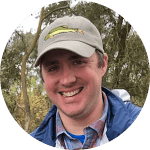
By Andrew Rypel, Ph.D., Peter B. Moyle and California Trout Endowed Chair, UC Davis Center for Watershed Sciences
CalTrout, now 50 years old, has grown alongside the fish conservation programs at UC Davis. In the early years, CalTrout was organized as a small group of concerned citizens that had a tenacious focus on improving management of wild trout populations, and also on the nascent (at the time) concept of catch-and-release angling. Initial efforts to examine FERC relicensing agreements on the Eel River exemplified the types of complex challenges CalTrout was willing to take on. During this same time, Dr. Peter B. Moyle relocated to UC Davis, and was beginning to build a dominant career as the world’s expert in the unique and declining native fish fauna of California. Dr. Moyle’s early work culminated with publication of “Inland Fishes of California” – a tour de force on the diversity and emerging challenges for California’s native fish fauna.
Legislative battles fought by CalTrout during the 1980s were successful at fighting back a number of threats to California’s freshwater ecosystems – most notably in the Mono Lake cases. These victories paved the way to protection of four important coldwater fisheries in the Eastern Sierra Nevada, and also began the process of refilling Mono Lake. By this point, CalTrout had developed a strong reputation for science-based fish conservation and its role in developing better policy on state and fish policy. During the 1990s, work and areas of emphasis between CalTrout and UC Davis began to converge more directly. Fish conservation science was in full swing at UC Davis. Dr. Moyle had trained a generation of fisheries professionals that were filling the ranks of state and federal agencies, as well as academic and other positions across the world.
In 1998, Geologist Dr. Jeff Mount teamed with Dr. Moyle and engineer Dr. Jay Lund to establish the Center for Watershed Sciences (CWS) at UC Davis. CWS was formed as a hub for interdisciplinary science on campus and was aimed at providing tangible solutions to long-vexing water problems. It became a non-partisan forum for problems, served as a gathering spot for dialogue, helped connect global and local ideas, and began to serve as a talent pipeline for students engaged in actionable interdisciplinary science. Collaborations between CWS and CallTrout quickly grew and continue today. Some of the best examples include early floodplain work on the Cosumnes River, the “Nigiri Project,” and water temperature and Coho salmon work in Big Spring Creek and the Shasta River. Extensive collaborations between CWS faculty, staff and students with CalTrout continue today.
Sometime around 2012, discussions between CalTrout and UC Davis began around the idea of developing an endowed chair professorship at UC Davis. Similar to the beginnings of CalTrout, the motivation for the position was driven by a group of donors concerned with the conservation and management of coldwater fishes in California. Formed in 2014, the Peter B. Moyle and California Trout Endowed Professorship honored Peter Moyle and the historical and productive working relationship between CalTrout and UC Davis. Furthermore, the chair position ensures that UC Davis will remain a hive for research and teaching activities on native California fishes for generations to come.
In 2017, I was thrilled to be hired as the inaugural chair holder. Work in the Rypel Lab specializes in questions emerging at the science-policy nexus, and many students in the lab work closely with CalTrout staff on their research projects.
The Need for Data

By Peter B. Moyle, Ph.D., Distinguished Professor Emeritus, UC Davis Center for Watershed Sciences
California Trout has a long history of using the best available science to support advocacy for protecting salmon and trout populations. Members realized that good angling experiences depended on healthy fish living in healthy waters. Their original motto, after all, was “Keeper of the Streams.”
But California’s fishes were not doing well. Reversing the trend would only be possible through science-based solutions. So, in 2007, CalTrout approached me (a long-time CalTrout member) about finding a way to start conserving fish in a more systematic matter. The result was a 2008 report by myself, Josh Israel, and Sara Purdy called Salmon, Steelhead, and Trout in California: Status of an Emblematic Fauna. The report provided a detailed account of the biology and status of the 31 kinds of salmonid in California, with recommendations for actions. A key part of the report was a repeatable method for numerically rating the status of each species: a survival score. CalTrout then produced a dramatic, colorful version of the report intended for a more general (non-scientific) audience. SOS: California’s Native Fish Crisis was widely distributed to policy makers, politicians, and activist anglers, emphasizing the need for action as backed up by solid, peer-reviewed accounts of each species.
In 2017, CalTrout issued an updated, expanded version of the report by myself, Robert Lusardi, and Patrick Samuel (now CalTrout's Bay Area regional director). The popular version of this report was called SOS II: Fish in Hot Water. This report expanded the previous one, with new and better information. It showed that while there were some bright spots—often actions taken directly by CalTrout—the situation had not improved much in the nine years since the initial report was published.
The updated report emphasized two findings in particular: first was the growing problem of climate change, creating unpleasantly warmer waters for cold water fish. The second was creating a list of actions that could be taken for each species.
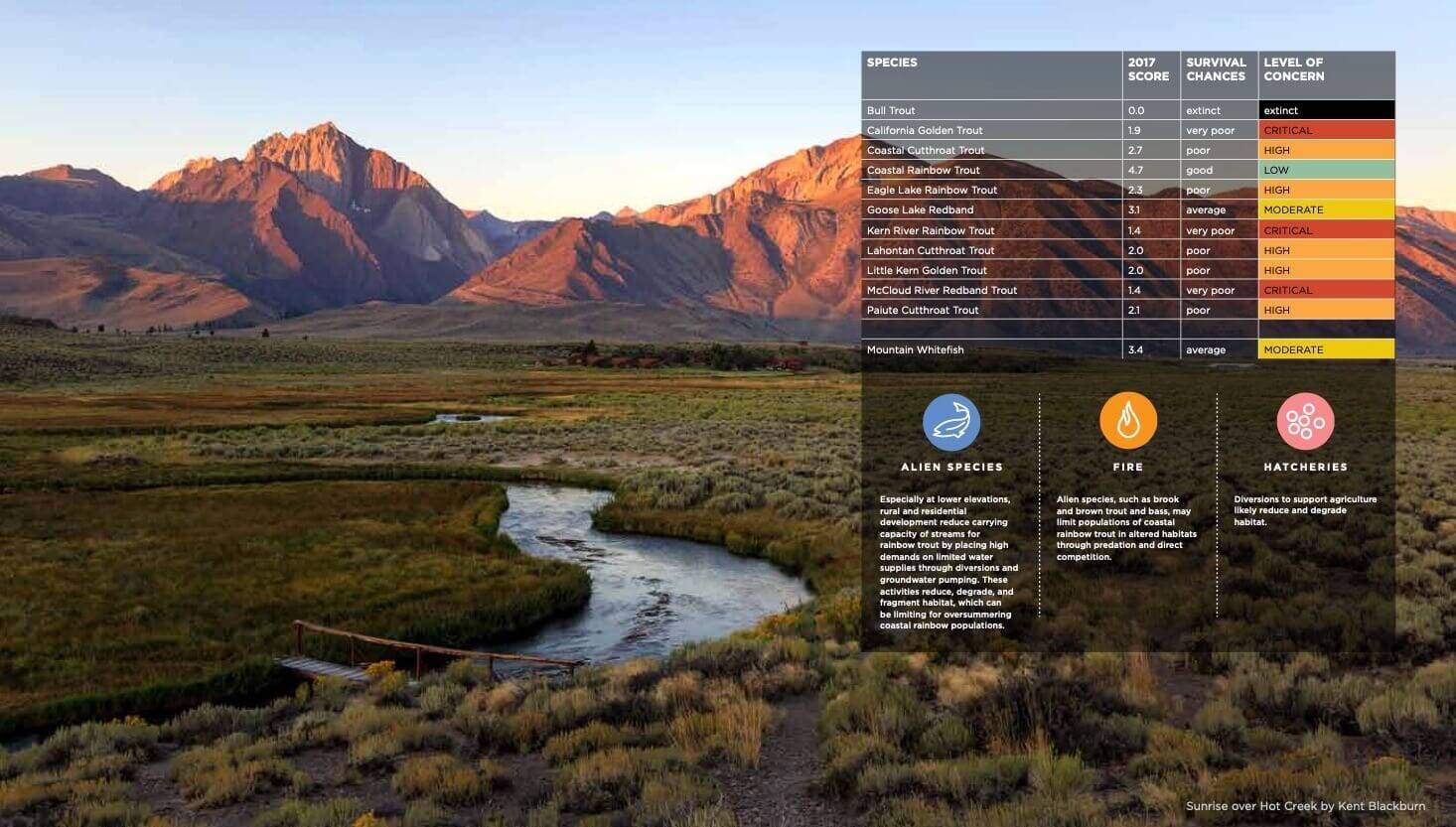
Species survival scores from SOS II: Fish in Hot Water
Applying Science to Restoration

By Rob Lusardi, Ph.D., California Trout - UC Davis Wild and Coldwater Fish Scientist
The State of the Salmonids II report is the only comprehensive review of all native salmonids in California and plays an important role in both capturing recent status trends of each species, but also helps guide recovery and restoration efforts on the ground. The scientific report has been cited numerous times in the scientific literature, often in terms of the current plight of these species, but more generally, the citations appear in scientific manuscripts that aim to recover one or more of California’s native salmonids.
While species accounts from the 2008 version comment on specific actions to help recover each individual species, the 2017 version goes one step further and makes holistic and robust recommendations for the broader species complex. These recovery recommendations are independent of species and geography and drive California Trout’s strategic plan. The recommendations are steeped in science and include six broad based themes across the salmonid landscape, including: protecting and improving current salmonid strongholds, protecting and restoring source waters, restoring productive and diverse habitats, adopting a reconciliation ecology approach as a basis for management, improving habitat connectivity and passage to historical habitats, and, finally, improving the genetic management of salmonids throughout the state.
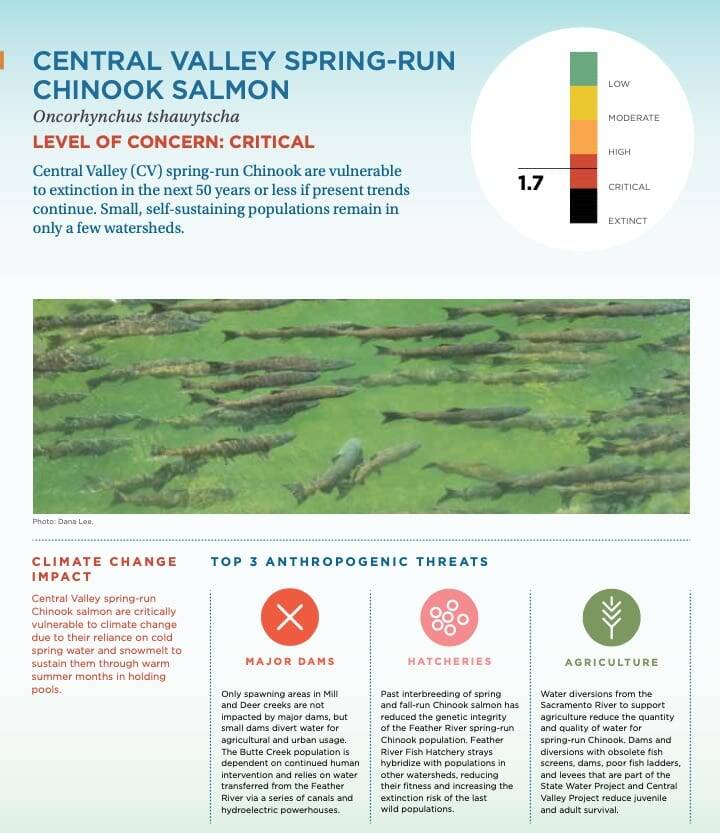
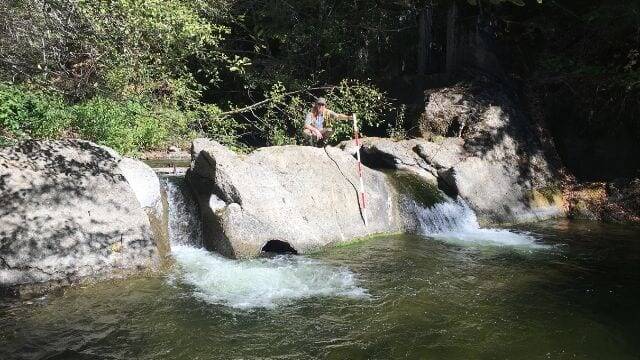
CalTrout is working to remove this 1950s hatchery dam blocking 9 miles of salmon and steelhead habitat on Cedar Creek, a tributary of the South Fork Eel River.
The SOS recovery recommendations are guiding principles that help inform and prioritize on-the-ground restoration. This can be readily observed in the Mt. Shasta region through a strategic investment in productive and diverse spring-fed rivers that will be key to anadromous recovery, while at the same time protecting resident salmonids from a rapidly changing climate. The same can be said for the North and South Coast, where investments in fish passage to historical habitats are having real and quantifiable benefits and also through an adoption of a reconciliation ecology approach as the basis for management in the Central Valley, where flooded rice fields are being used to mimic natural floodplains to improve the growth and condition of out-migrating salmon.
In short, the State of the Salmonids report not only defines the current status and trends of all salmonids in the state, but uses science to guide restoration and recovery efforts across California’s diverse landscapes.
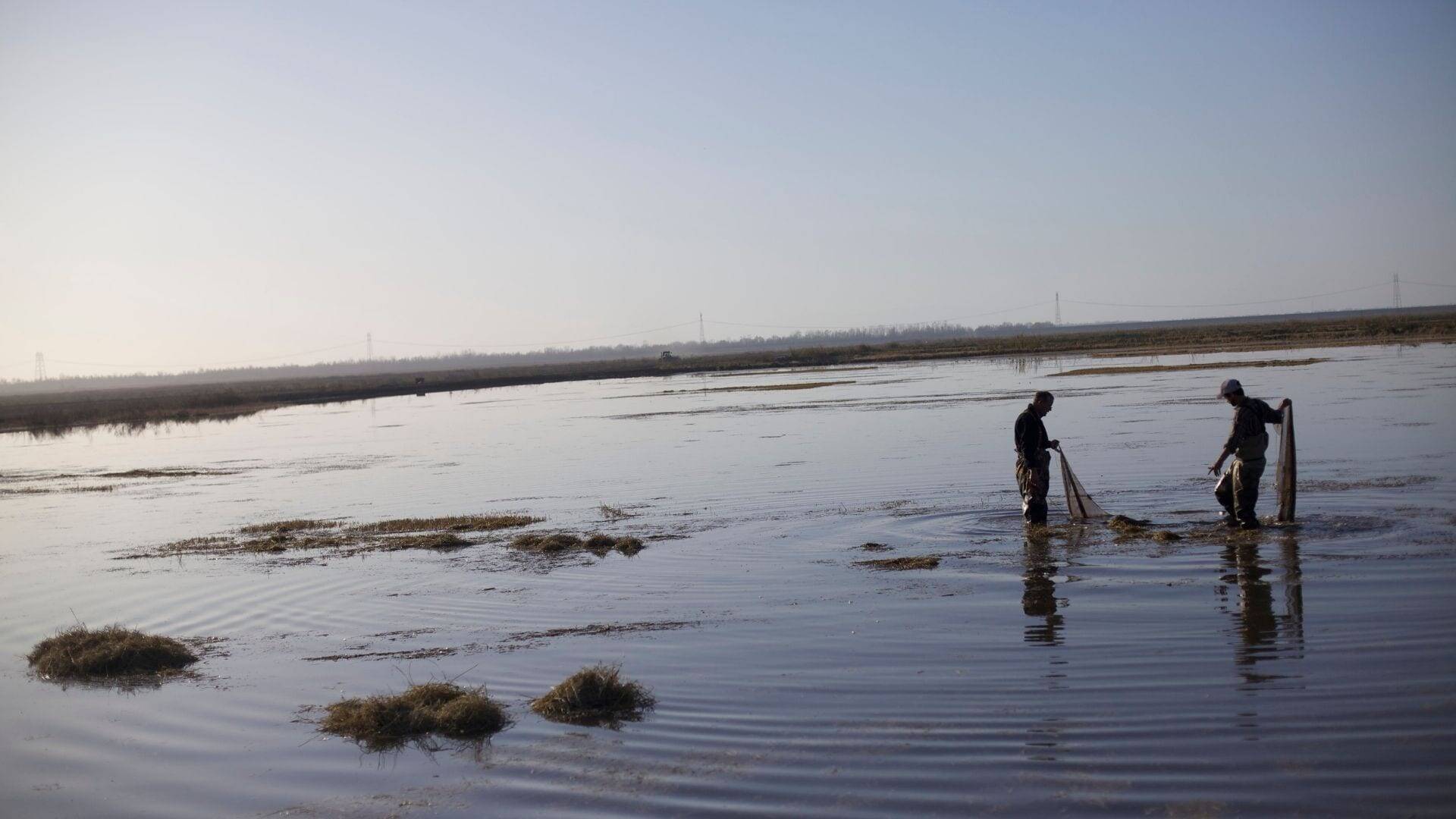
CalTrout - UC Davis scientists on Central Valley Floodplains



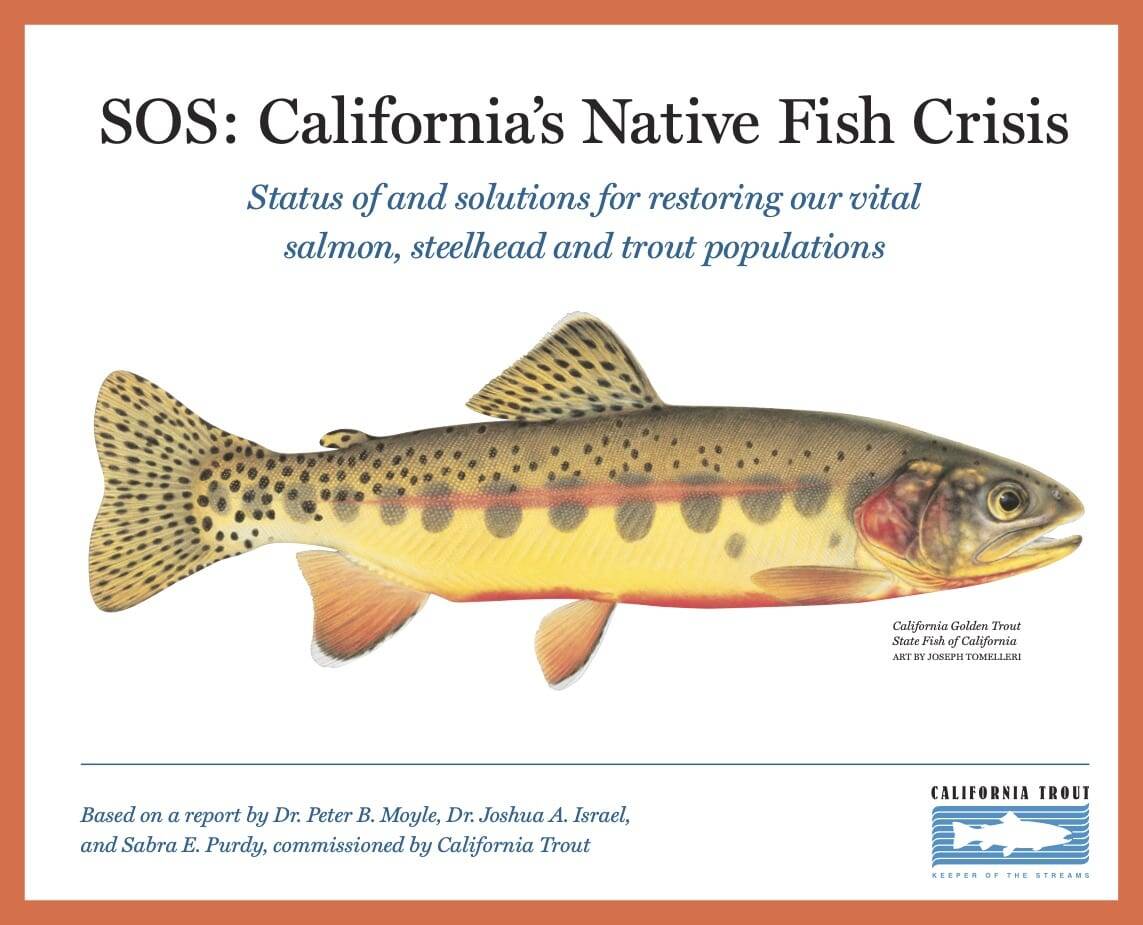
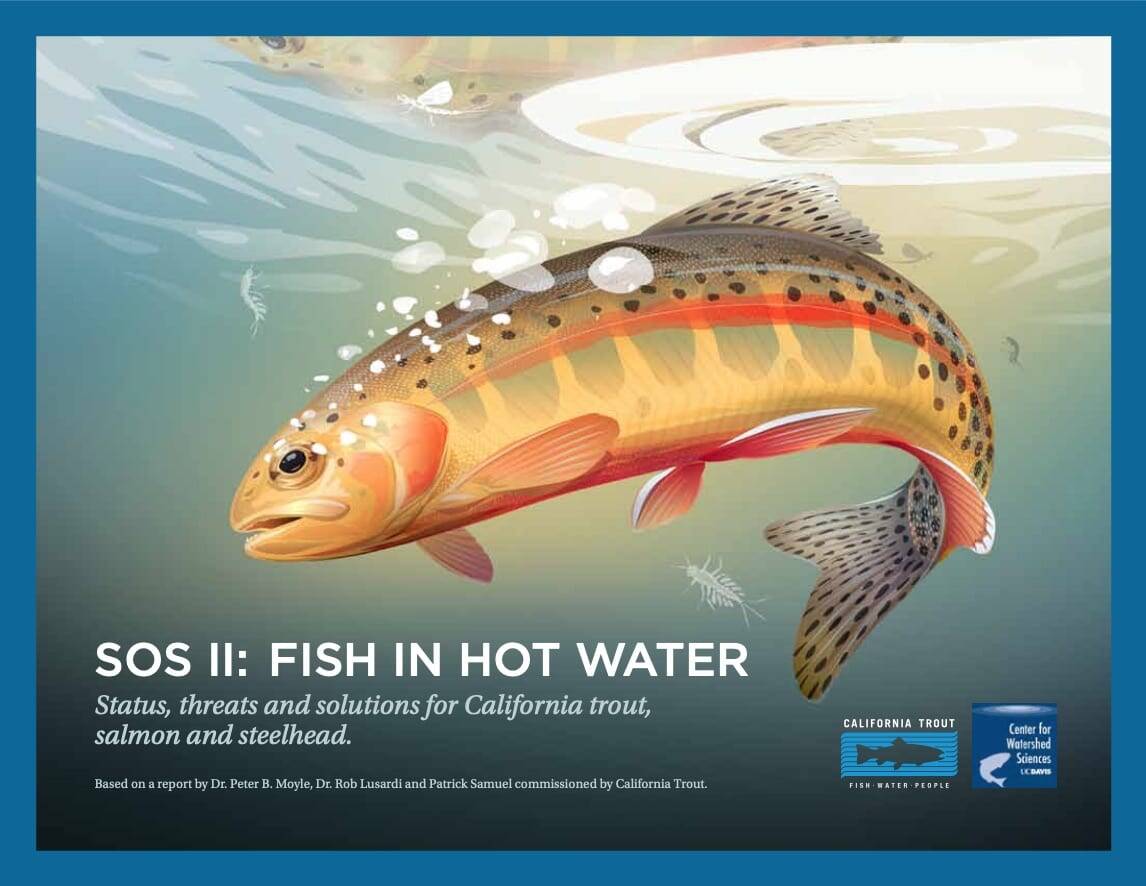
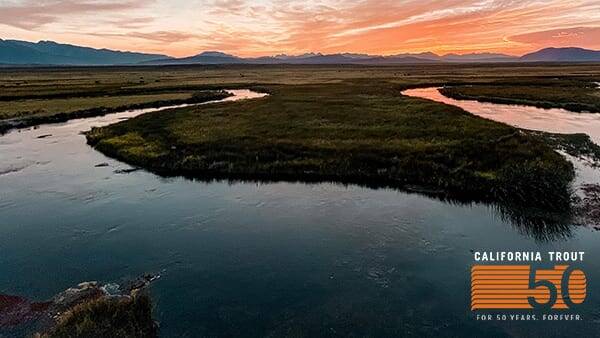

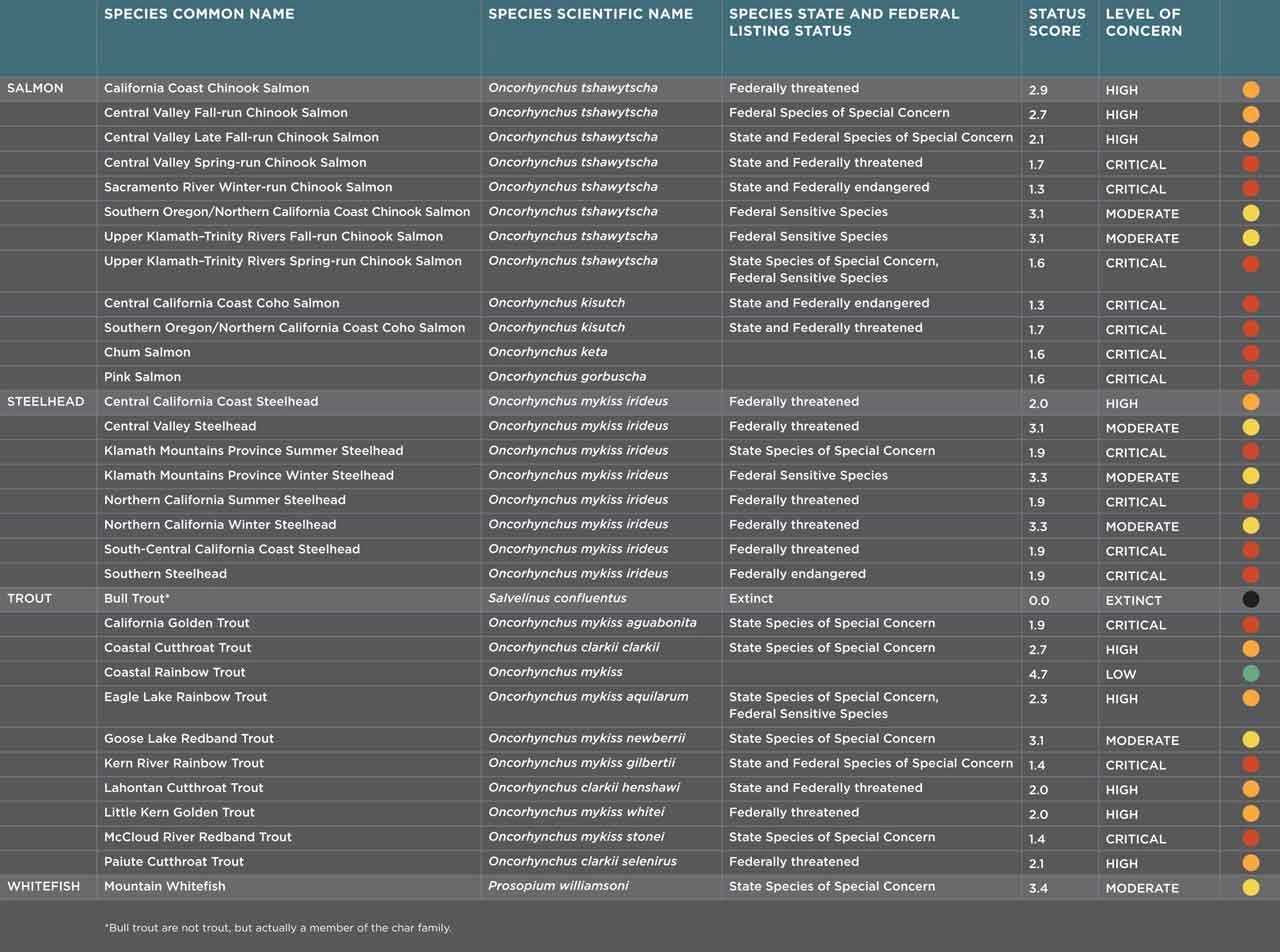












 Dams block access to historical spawning and rearing habitats. Downstream, dams alter the timing, frequency, duration, magnitude, and rate of change of flows decreasing habitat quality and survival.
Dams block access to historical spawning and rearing habitats. Downstream, dams alter the timing, frequency, duration, magnitude, and rate of change of flows decreasing habitat quality and survival.